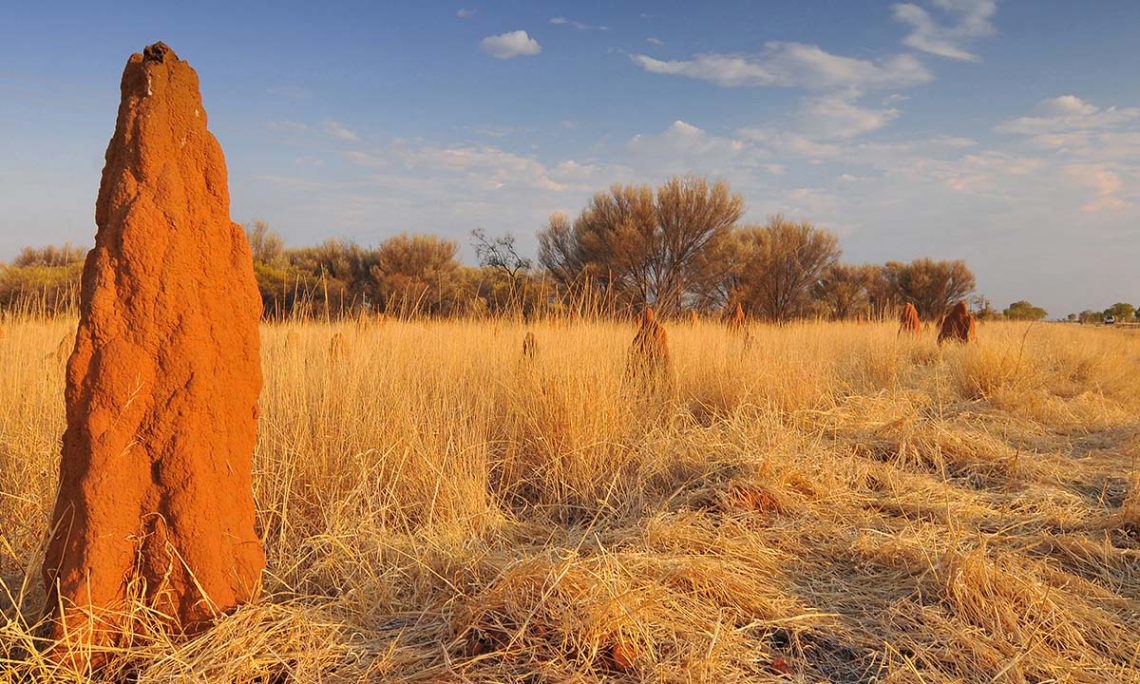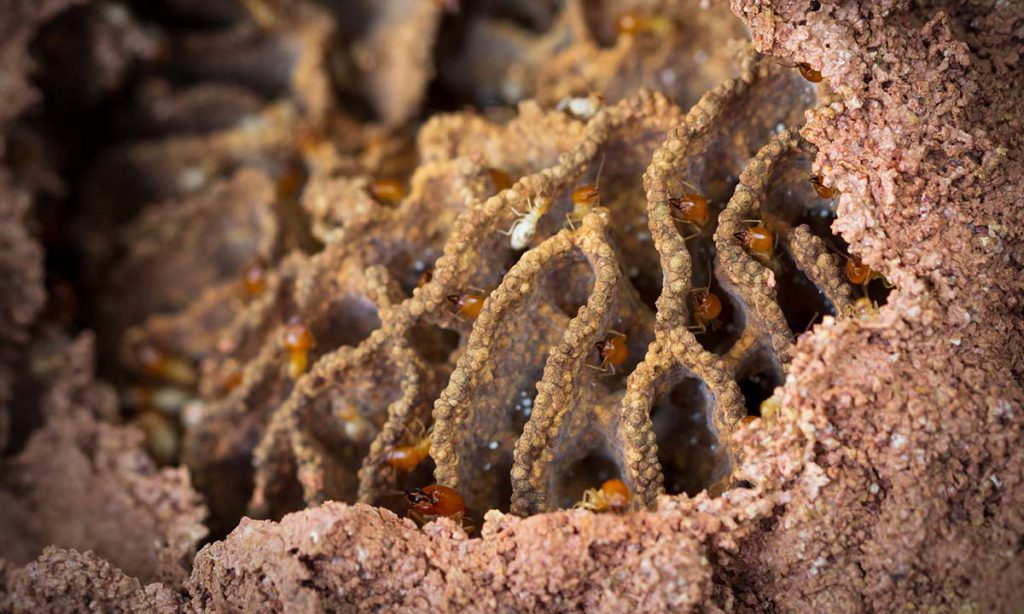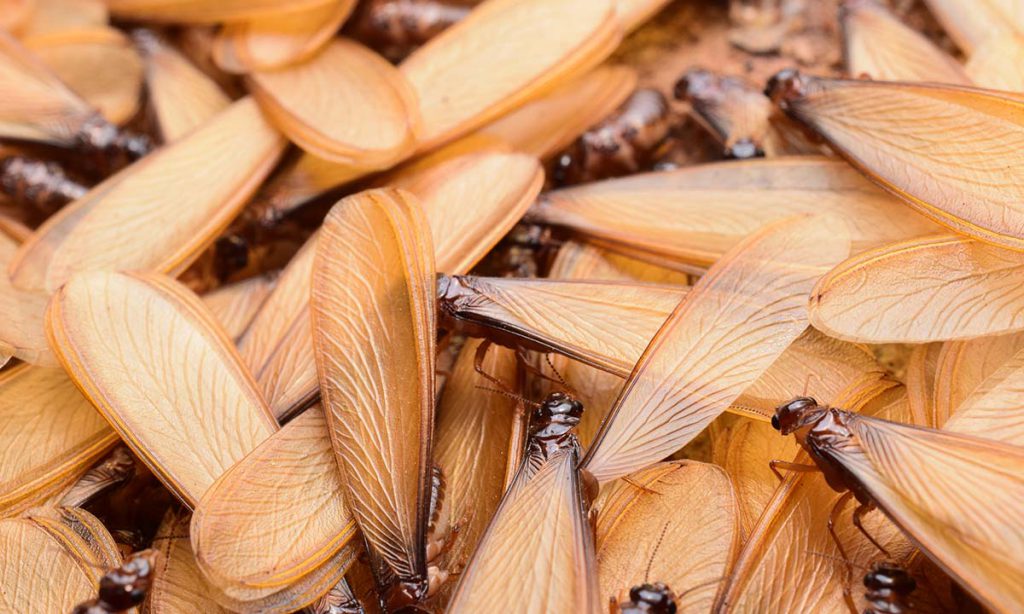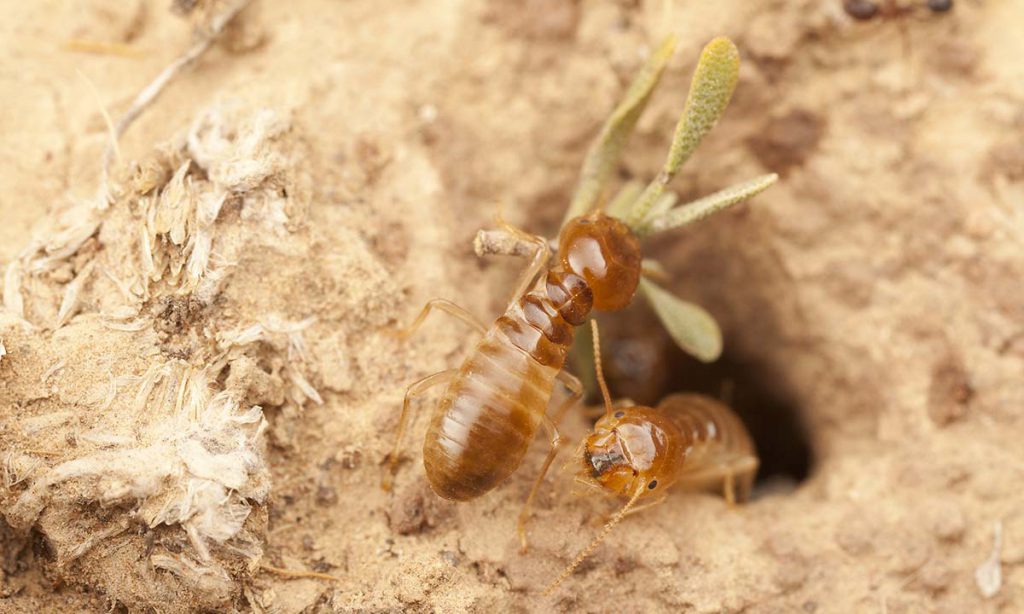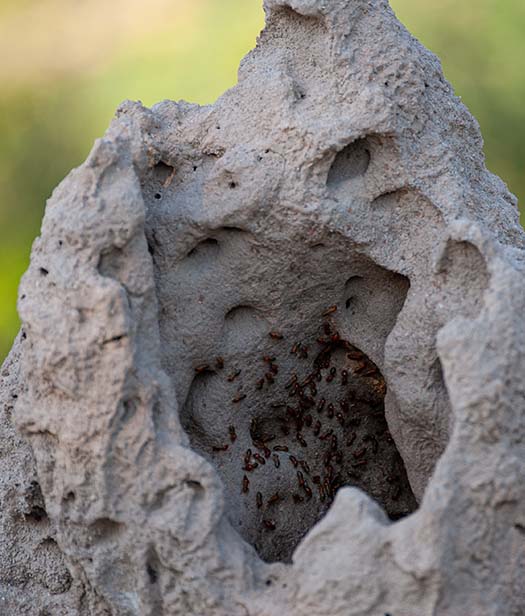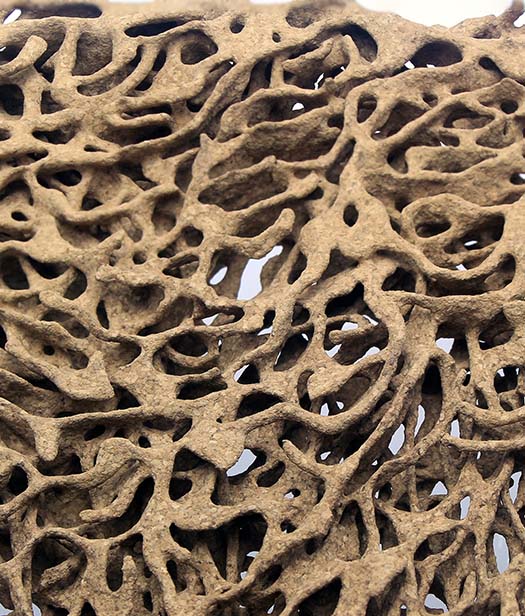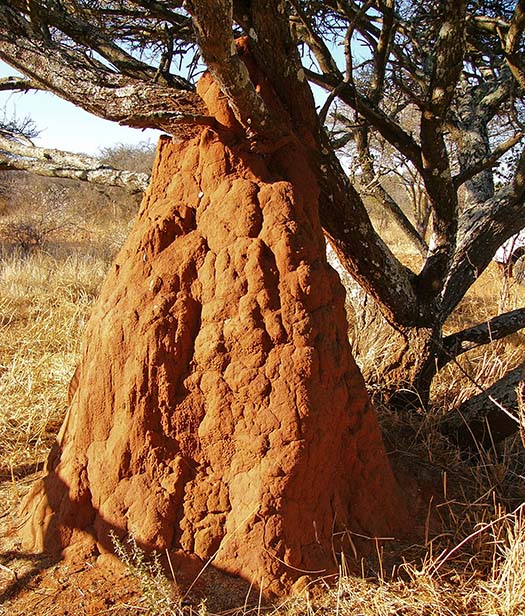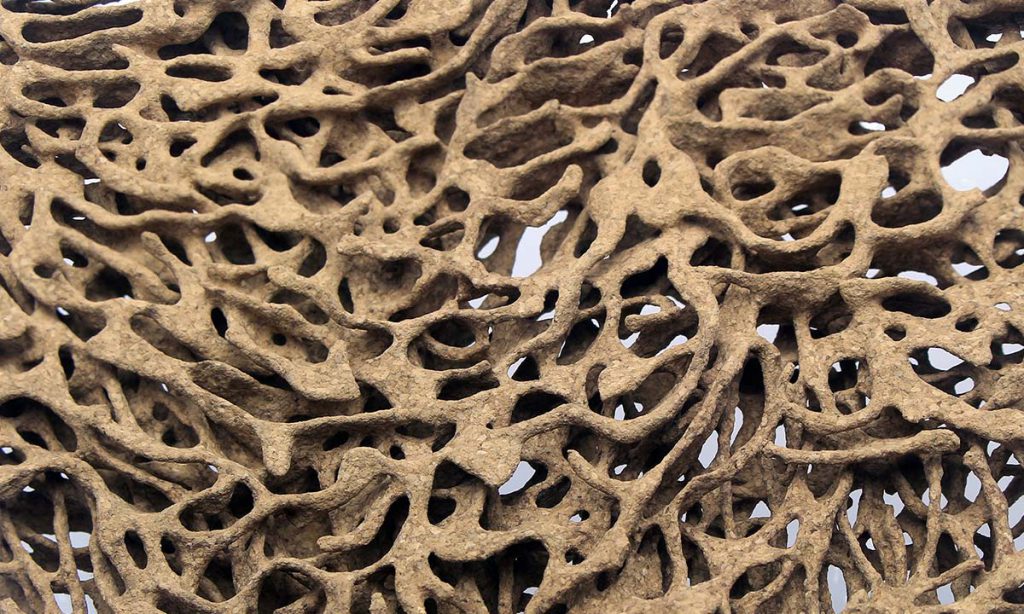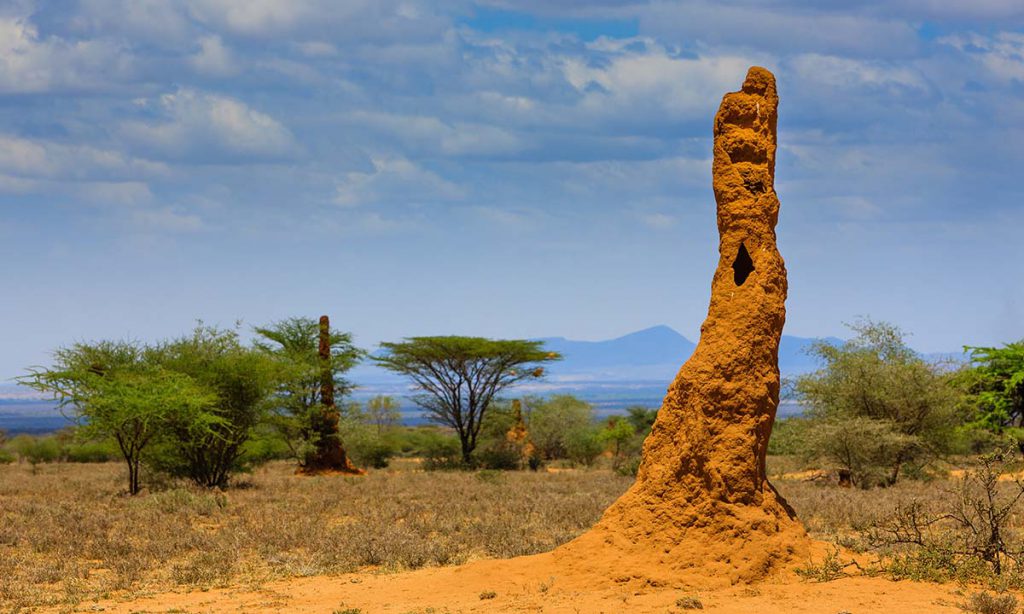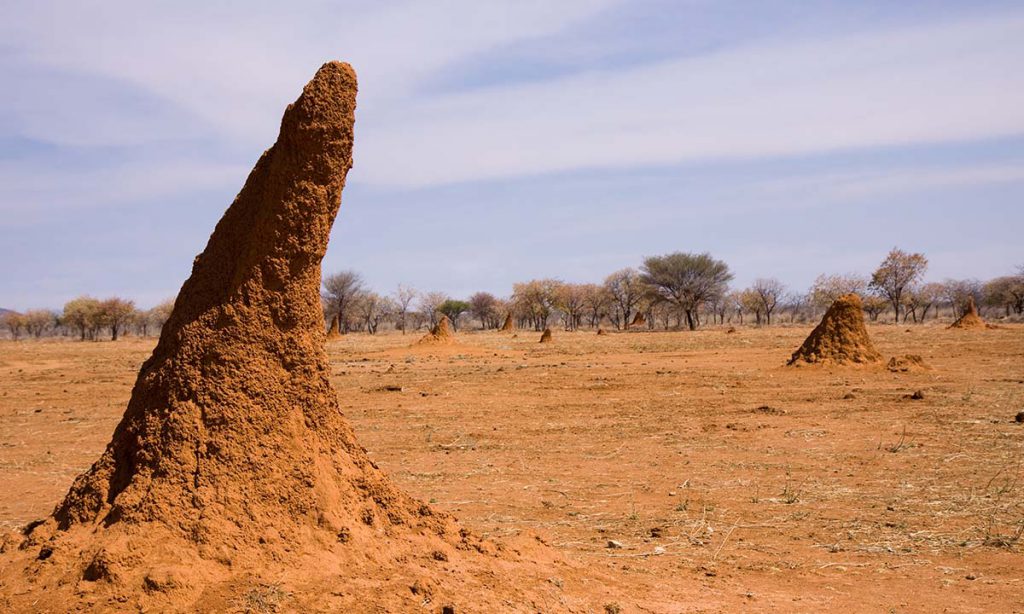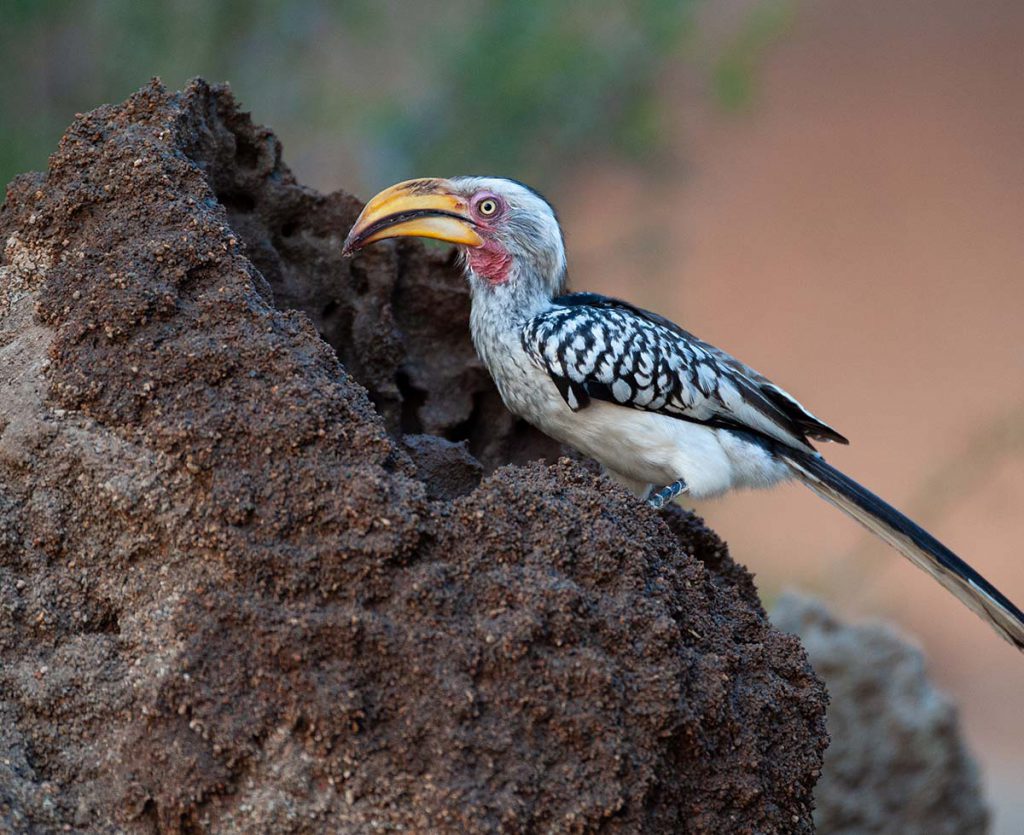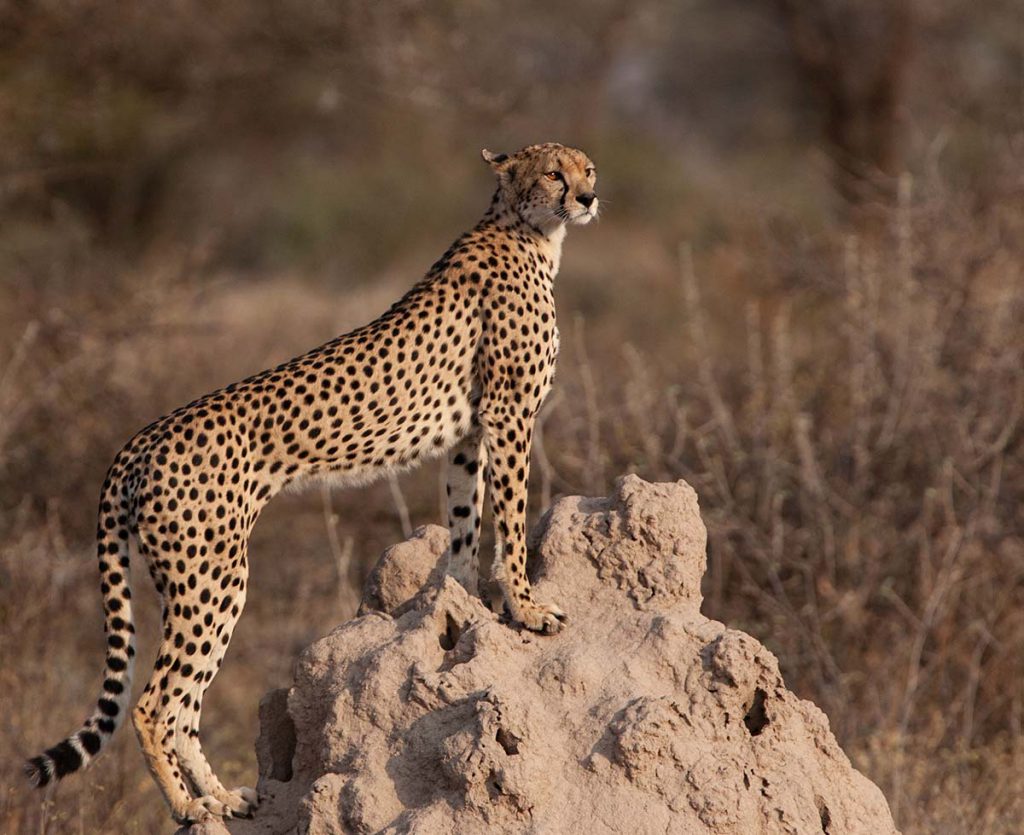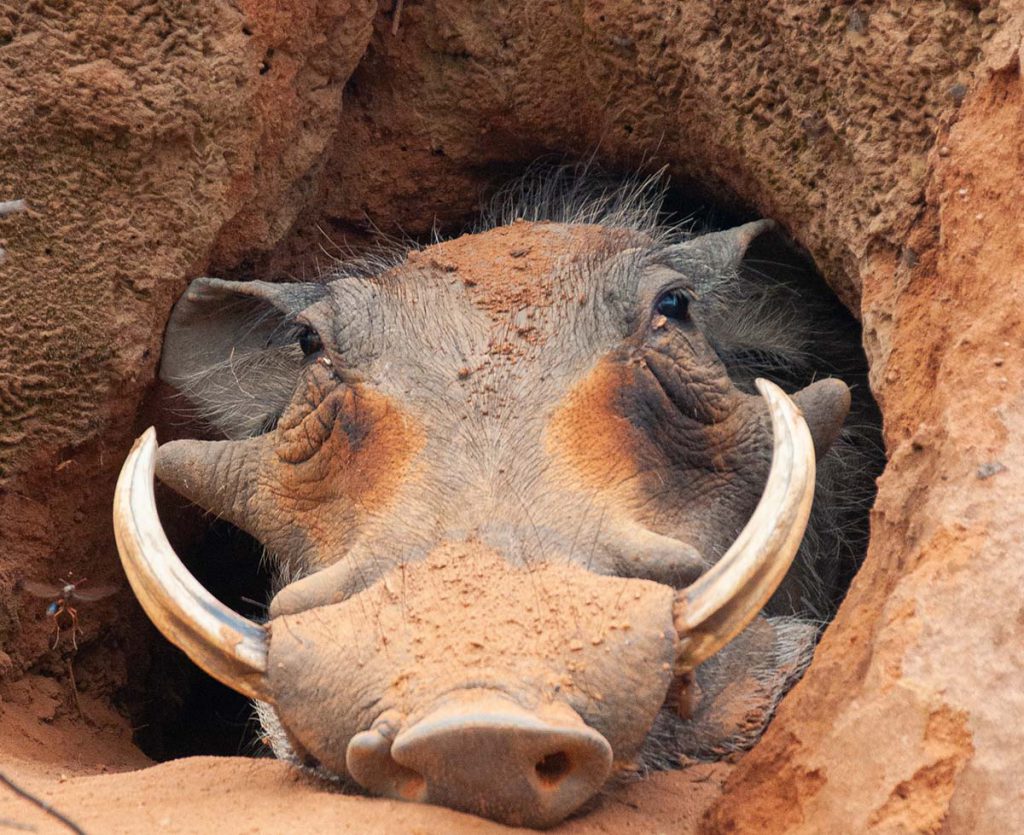Kingdom: Animalia | Phylum: Arthropoda | Class: Insecta | Order: Blattodea
Infraorder: Isoptera | Family: Termitidae | Subfamily: Macrotermitinae | Genus: Macrotermes
TERMITES! Found on every continent of the world, except for Antarctica, termites are a *keystone species and are the oldest known organised community on the planet, having been traced back 300 million years. Due to their remarkable ability to communicate and function as a cohesive community, these days scientists view each termite colony as a single super organism, rather than as individual insects.
*What is a “keystone species”? A keystone species plays a unique and crucial role in the way an ecosystem functions and this role enables other species to survive. Their absence would mean that their ecosystems would be significantly altered at the least, or would fade away completely.
Often called “white ants”, termites are in fact not ants, nor are they even closely related to ants. Ants belong to the insect order Hymenoptera, whereas termites belong to the order Isoptera. It’s the macrotermes (wood eating) termites, as found here at Mabalingwe Nature Reserve, which are responsible for the large termite mounds that are a common feature of our South African (and greater African) bushveld landscapes.
But their “wood eating” label is a bit misleading, in that the plant material gathered and brought back to the colony is more a means to an end than the actual meal of the day. Macrotermes termites forage dead plant materials from the field, then chew the plant material to a pulp, which they then use to cultivate a fungus on which they actually feed.
The cultivated fungus crops need constant humidity and a temperature of around 30°C to thrive. Incredibly, the termites maintain the temperature by opening and closing ‘chimneys’ or vents in the mound. The porous walls of the mound also allow wind to remove excess heat from the nest. Termites rely on their own metabolic heat to warm the mound during cold weather. Humidity in the mound is maintained by the termites tunneling down to the underground water table, which allows for moisture to be released into the mound.
The creation and maintenance of the colony-infrastructure, ‘air-conditioning system’, food source, defences and reproductive success can only be achievable with a sophisticated intracolony (and possibly intercolony) communication system. These social insects have developed successful communication systems for a variety of contexts, such as warning and defence against predators, messaging to allow for the quick and efficient uptake of available resources, mound building and reproduction.
Studies show that termites make use of both chemical communication (pheromones) and acoustic communication. When under threat, soldier termites drum against the earth with their heads. This causes vibrations that serve as an alarm signal to the other termites. In response, worker termites retreat to the safety of the nest and soldier termites converge on the area where the drumming is originating from, to assist with defence. Truly amazing!
These incredible creatures also communicate with neighbouring colonies in regards to predator threats and, due to the fact that same species reproductive termites (winged) emerge from their mounds at exactly the same time on exactly the same day for their annual pre-summer rains reproduction process; it is thought that this must be due to successful intercolony communication.
What a GRAND creature the tiny-but-mighty termite is!
More Marvelous Macrotermes Morsels:
- Termite colonies have a caste structure: workers, soldiers and reproductives (including the queen).
- Because of their complex communication system, the queen knows if there is a shortage of any one caste-type in the nest. For example, should a number of soldiers be killed in an ant attack on the colony, the queen will produce more soldier eggs until the balance is restored.
- Reproductive cast termites (some workers become winged reproductive adults) swarm from the mound at a specific time on a day just before the start of the rainy season; in order to mate and establish a new colony, with themselves as king and queen.
- Macrotermes build their large mounds very slowly. It takes them around 10 years to reach 1 metre in height and they are usually as deep as they are high.
- Known termite predators include humans, aardvark, Matabele ants and some bird species.
- One would think that – because animals such as rhino, buffalo, warthog and even elephants use termite mounds as scratching posts – their hard, towering work would regularly be destroyed. Fortunately, the mounds (also called termitaria) – which are built from a mixture of soil, saliva and faeces – dry as hard as concrete and are extremely difficult to break.
- Termite mounds can help you get your bearings in the bush, as the tip of the mound usually leans towards North!
- Considered ecosystem engineers, termite colonies are one of the most efficient organisms contributing to decomposition and recycling of dead trees and vegetation in the bushveld.
- Termite mounds can be up to be five meters tall here in Africa, and extend deep underground too. Mounds have been found reaching as deep as 30 meters underground. The termite’s tunnelling and mound-building activities enriches and aerates the soil, as well as increasing the permeability of ground water.
- For many animals, termite mounds are significant structures in their environment. There are many creatures that prey on termites themselves for food, such as ants, crickets, scorpions, spiders, lizards, frogs, bats, aardvarks, aardwolves, pangolins and many birds. Large predators, like cheetahs and lions use mounds as lookouts, and a large number of species make their homes inside empty termite mounds.

